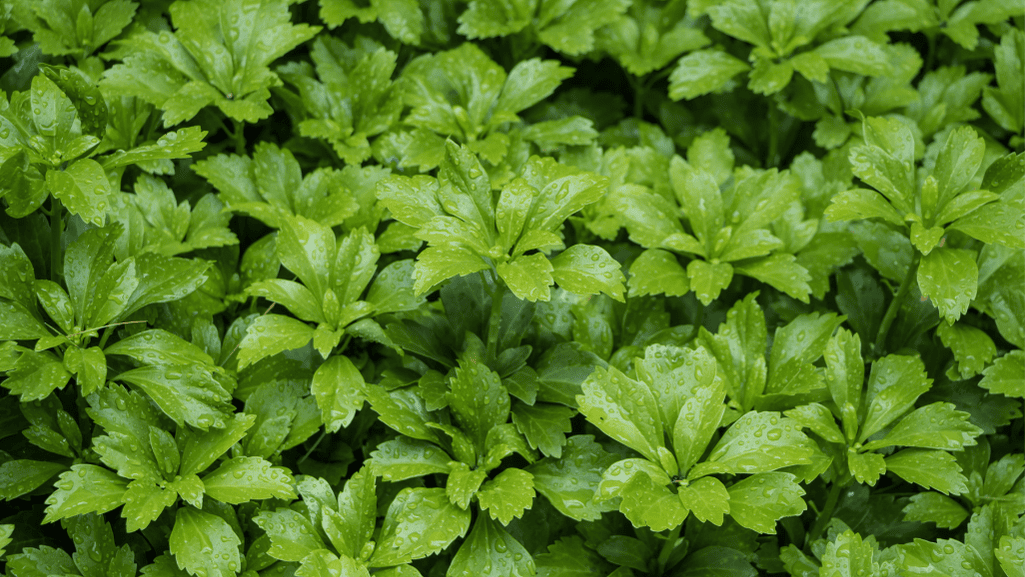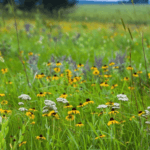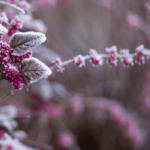
Beautiful flowers gardenia Plants For Your homes

Want to create healthy landscaping with lush, low maintenance ground cover? Pachysandra is a great choice for gardeners looking for a ground cover plant that stays green all year. To help it grow well, pachysandra care means planting them 6 to 12 inches apart. By its third year, it forms a dense, green mat with fragrant white flowers in spring. This is perfect for any garden.
Pachysandra ground cover is known for its strong nature and looks great all year. It’s perfect for shady spots under trees and dense shrubs. These areas are hard for many landscaping plants to do well in. Pachysandra loves rich, well-drained soil and forms a lush green carpet. This makes gardens look better and work better too.
Unlike ivy and vinca, which can spread too much, pachysandra grows just right. It’s tough against pests and loves shady spots. This makes it great for green, sustainable gardens.
| Ground Cover | Characteristics | Ideal Conditions | Flowering |
|---|---|---|---|
| Pachysandra Terminalis | Evergreen, spreads evenly | Full to partial shade | Rarely flowers |
| Brunnera Macrophylla | Frosty heart-shaped leaves, blue flowers | Woodland, shaded | Spring |
| Lamium Maculatum Golden Anniversary | Variegated foliage, lavender flowers | Sun and shade | Early summer |
| Vinca Minor | Purple-blue flowers, fast-growing | Low-light, invasive | Spring to fall |
There are many ground covers to choose from, each fitting different gardens. Pachysandra ground cover is a top pick for shade loving plants. It’s easy to care for and looks stunning. It’s perfect for both new and experienced gardeners wanting to improve their gardens.
When planning a landscape or looking for easy-to-care-for ground covers, picking the right ones is key. Pachysandra not only makes your garden look great but also helps with weed control and keeping soil moist. Choosing between native and non-native pachysandra, like Japanese and Allegheny spurge, depends on several factors.
Native ground covers, like Allegheny spurge, fit well with local plants and don’t harm them. They are tough and need less care, which is good for local wildlife and sustainable gardening. Japanese spurge, on the other hand, looks lush and grows fast but can be invasive in some areas. It needs careful control to stop it from taking over.
Japanese spurge is popular for its beauty and strength. It suits many climates, from USDA Hardiness Zones 5a to 9a. But, it can spread quickly and crowd out native plants. It’s important to keep an eye on it to prevent this.
Allegheny spurge is a great choice for those wanting native plants. It thrives in USDA zones 5b to 9a and has unique, blue-green leaves. It’s also deer-resistant, standing up to local wildlife.
Both pachysandra types help control erosion and keep soil moist. Once they spread, they form a dense layer that stops weeds. Choosing between Allegheny and Japanese spurge lets gardeners support local ecosystems while still making their gardens look good.
When planting pachysandra, timing and technique are key. Early spring or early fall are the best times, on overcast days to protect the plant from the sun. This helps the plants settle well with less stress.
Start by preparing the planting area for perfect shade ground cover. Clear the area of weeds and debris, focusing on spots with little sunlight. Dig a hole twice as wide and deep as the root ball to give the plant enough space for its roots.
When putting each pachysandra plant in the soil, do it gently. Make sure to remove any air pockets to help the roots and soil connect well.
After planting, keep up with regular care for healthy growth. Check the soil’s moisture, keeping it moist but well-drained during the early stages. Mulching can help keep the soil moist and at the right temperature, creating a great environment for growth.
Pachysandra plants take about three years to cover the ground well when spaced 6 to 12 inches apart. This spacing helps them spread evenly and maintain a lush look. Pachysandra is perfect for areas under trees or around shrubs where other grasses may struggle.
This ground cover not only looks great but also cuts down on weeding and mulching. Choosing pachysandra can make landscape care easier while keeping your yard looking green all year.
| Property | Detail |
|---|---|
| Optimal Planting Time | Early Spring or Early Fall |
| Ideal Sunlight | Full to Partial Shade |
| Soil pH Preference | 5.5 – 6.5 |
| Spacing for Planting | 6 – 12 inches apart |
| Common Issues | Leaf Blight, Euonymus Scale |
| Fertilization Requirement | Not necessary, optional balanced fertilizer in late winter or early spring |
In conclusion, planting pachysandra is rewarding for those wanting a low-care ground cover for shade. With the right planting and care, pachysandra becomes a strong, lasting part of any garden.
To grow a low maintenance ground cover, knowing the best spacing for pachysandra is key. It’s important for both new and experienced gardeners. A good pachysandra planting guide is essential for success. It makes sure pachysandra plants have enough space to grow into a lush cover, making your garden look great.
For a lush, green carpet, how you space your pachysandra matters. Plant them 6 to 12 inches apart for the best results. This lets them spread out well, fill in gaps fast, and grow strong. It also stops weeds from growing, cutting down on garden work.
Planting close together can make your garden cover faster, but don’t overdo it. Too many plants can block air and create a humid spot, leading to diseases. Proper spacing makes it easier to take care of your garden, like trimming or fertilizing when needed.
| Condition | Impact on Pachysandra |
|---|---|
| Spacing less than 6 inches | Increased fungal risks, poor air circulation |
| Spacing 6 to 12 inches | Optimal for health and dense ground cover |
| Spacing more than 12 inches | Slower ground cover formation, increased weeding |
Spacing is crucial for your plants’ health and your garden’s look and function. It’s key for a low maintenance ground cover. By following these tips, your pachysandra will grow thick and stay healthy, making your garden better in looks and nature.
For those looking to add shade garden plants to their gardens, pachysandra is a top choice. It stays green all year. Proper pachysandra maintenance is key, especially with watering and soil. These tips will help your pachysandra grow well and keep your garden looking great.
Pachysandra is great for ground cover plant care. It likes soil that drains well and is a bit acidic. The ideal pH is between 5.5 and 6.5. Make sure the soil holds moisture but doesn’t get too wet to prevent root rot. Here are some watering and soil tips for your pachysandra:
Knowing what your shade garden plants need can make gardening better. Here’s a look at the best and worst conditions for pachysandra:
| Condition | Ideal | Less-than-Ideal |
|---|---|---|
| Soil Type | Loose, rich in organic material | Clay-heavy, poorly draining |
| Soil pH | 5.5 to 6.5 | Above 7.0 |
| Watering Method | Drip irrigation, soaker hoses | Overhead sprinkling |
| Climate | USDA Zones 6-9 | Extreme temperatures outside these zones |
Keep these tips in mind to make caring for your pachysandra easier and more rewarding. Paying attention to watering and soil quality will keep your evergreen perennial looking great for years.
Getting the right light for pachysandra shade is key to keeping it green and healthy. Knowing how light affects this plant helps you create a perfect pachysandra landscape.
Pachysandra doesn’t like full sunlight and can get bleached or turn yellow. So, it’s important to place it in the garden where it won’t get too much sun. This keeps its delicate leaves safe.
Pachysandra does well in full to partial shade. It’s perfect for spots under trees or on the north side of buildings where the sun is gentler. This setting is close to its natural home, protecting it from too much light.
Here’s a table that shows the best conditions for pachysandra. It’s easy to care for and adaptable:
| Characteristic | Description |
|---|---|
| Light Requirement | Part sun to full shade |
| Plant Spacing | 6 to 12 inches apart |
| Growth Dimensions | 6-12 inches in height, 12-18 inches in width |
| Flower Color | White |
| Foliage Color | Blue/Green |
| Hardiness Zones | 4 to 9 |
| Soil Requirement | Evenly moist, slightly acidic, well-drained |
| Propagation | Division and stem cuttings |
| Deer Resistance | High |
In conclusion, ground covers for shade like pachysandra are great for looks and function. By choosing the right light, you help it thrive and make your garden look better.
Pachysandra care is key to keeping your landscaping looking great with minimal work. It’s a top choice for ground cover because it’s easy to keep up. Knowing how to care for these evergreen shrubs is a must for gardeners who want to make their outdoor areas look better.
Mulching helps keep pachysandra moist and fights weeds, which is good for its health. Use organic mulches like pine bark or shredded leaves. They help the soil as they break down, making it better for pachysandra.
Along with mulching, fertilizing the right way is important. You want to keep the foliage healthy without too much flowering. Avoid giving it too much fertilizer, especially the kind high in phosphorus, to keep it looking good.
When to fertilize is also important. Apply a balanced fertilizer in late winter or early spring. This helps it grow well and stay colorful all season. But be careful not to overdo it if pachysandra might spread too much in your area.
Here’s a guide on how to mulch and fertilize your pachysandra for the best results:
| Seasonal Timing | Mulch Type | Fertilization Type | Application Rate |
|---|---|---|---|
| Spring | Organic (Pine Bark, Shredded Leaves) | 10-10-10 Balanced Fertilizer | 1-2 lbs per 100 sq ft |
| Late Winter | Organic (Compost) | 10-10-10 Balanced Fertilizer | 1-2 lbs per 100 sq ft |
Regular care like mulching and fertilizing is crucial for keeping pachysandra healthy and looking great. By following these tips, you can have a beautiful, evergreen ground cover. It will make your landscape look better and need little upkeep.
Effective pachysandra propagation uses simple yet powerful gardening techniques. These methods are key for spreading ground cover expansion. We’ll cover two main ways: dividing plants and taking stem cuttings. These are great for those wanting more pachysandra plants.
Dividing pachysandra is a simple way to grow your garden. You dig up clumps and split them into smaller pieces. Make sure each piece has roots and shoots for the best chance of success.
Planting these divisions quickly helps them grow strong. This uses the plant’s natural toughness and ability to adapt.
Using stem cuttings is a flexible way to grow pachysandra. Choose healthy stems, add rooting hormone, and put them in moist soil. This method needs careful attention and patience, as roots take about six weeks to form.
| Parameter | Data |
|---|---|
| Survival Rate of Plants from Cuttings | 100% |
| Cost of Rooting Hormone vs. Water | Rooting hormone more expensive |
| Rooting Hormone Effectiveness | Successfully worked in all cases |
| Environmental Impact | Potentially harmful |
| Safety Concerns of Rooting Hormone | Hazardous waste, use gloves, keep away from pets and children |
| Optimal Propagation Time | Spring season |
Using these gardening techniques can make your pachysandra spread and improve your garden. Whether by division or stem cuttings, growing your pachysandra cover is rewarding and good for the environment.
Keeping pachysandra healthy means watching out for pests and diseases. These can hurt plant health. It’s important to use good pest control and disease prevention methods to keep pachysandra in good shape.
Volutella Leaf and Stem Blight is a big problem for pachysandra, especially in the Northeast. It’s caused by a fungus and loves moist places. Look for tan to brown spots on leaves and stem cankers that can kill the plant.
To fight this disease, don’t water from above and clean up infected leaves. Thin out plants to let air move through. For bad cases, use fungicides like chlorothalonil or mancozeb as directed.
The Euonymus Scale is a tough pest that eats pachysandra sap and can spread diseases. It’s hard to kill because of its waxy shell. This can make leaves turn yellow and stunt growth, and can even kill the plant.
To manage this, cut off infested parts and use horticultural oil carefully. Keep an eye on your plants and make sure they get enough water to stay healthy.
Dealing with pachysandra pests and diseases requires a careful plan. Use a mix of cultural, chemical, and biological methods to keep disease prevention strong and plant health up.
| Condition | Problem | Recommended Solution |
|---|---|---|
| Mold and Fungus | Sooty mold due to aphids | Use neem oil and improve plant vigor with adequate fertilization and watering |
| Leaf Spotting | Volutella blight | Reduce moisture on foliage, improve air circulation, apply appropriate fungicides |
| Pest Infestation | Euonymus scale | Prune infected areas, apply horticultural oil, ensure good plant health |
When it comes to pruning pachysandra, it’s all about being subtle. This plant doesn’t need much to look great in your landscape design. Start by gently pinching it to make it fuller. As it grows, a little trimming helps it spread out nicely, keeping it looking neat without hurting it.
Adding pruning practices to your routine helps your ground covers look better and breathe better. Spring is a good time to prune, helping your pachysandra grow strong all season. For older plants, just a quick trim with a high mower setting keeps them looking good without hurting the roots. This shows how important being careful is in evergreen perennial care.
| Pruning Tool | Ideal Usage | Max Cutting Diameter |
|---|---|---|
| Scissor-action pruners | Small twigs and light branches | 0.5 inches |
| Lopping shears | Medium branches | 1.5 inches |
| Pruning saws | Large branches | >1.5 inches |
| Pole pruners | High branches, inaccessible from the ground | Varies with attachment |
Knowing which tools to use for pruning pachysandra and other plants is key to good care. From small pruners for details to pole pruners for high spots, each tool has its role. Using these tools with the right techniques will help your plants grow strong and look their best.
Adding pachysandra terminalis to your garden is more than just about its green cover. It’s about making your garden inviting with its flowers and scent. This plant is known for its dense growth and small, white flowers that smell like jasmine. This makes your garden more enjoyable for all your senses.
Pachysandra blooms in early spring, turning your garden into a colorful scene. For the best blooms, keep the soil pH between 5.5 and 6.5 and humidity around 50%. These conditions help the plant grow strong and bloom well.
Choosing the right fertilizer is also key. Use 10-10-10 or 12-12-12 to feed your pachysandra. Too much fertilizer can make the plant focus on leaves instead of flowers. So, be careful with how much you give it.
Not everyone likes strong smells, so think about planting pachysandra thoughtfully. Keep it away from busy spots or mix it with plants that don’t have a strong scent. Also, be careful with watering to avoid making the smell too strong.
| Characteristic | Requirement | Benefits |
|---|---|---|
| Soil pH | 5.5-6.5 | Optimizes nutrient availability and bloom quality. |
| Humidity | Around 50% | Emulates native habitat conditions promoting health. |
| Fertilization Ratio | 10-10-10 or 12-12-12 | Provides essential nutrients without overfeeding. |
| Watering Method | Soaker hose at the base | Prevents leaf blight and sustains appropriate moisture. |
By considering these tips, you can make sure your pachysandra terminalis is healthy and beautiful. It will add color and a lovely scent to your garden.
In this guide, we’ve looked at pachysandra, a reliable and low-maintenance ground cover. It thrives in shade and is perfect for gardens that are tough. Pachysandra is great for keeping deer away and can handle drought and different light levels.
It’s a favorite among gardeners for its lasting beauty and ability to stay green all year. This makes it a top pick for those looking for a ground cover that’s deer-resistant.
But, pachysandra can spread too much if not managed well. This guide shows how to plant and care for it to keep it in check. By following the right steps, pachysandra can create a thick, shrub-like cover. This cover helps keep soil moist and covers the ground well in tough garden spots.
The plant’s green or variegated leaves and some varieties’ white flowers make it even more attractive.
As we conclude, we encourage you to look into other perennials that go well with pachysandra. Consider plants like Althaea rosea, Echinacea, and Aquilegia for a beautiful garden. For more tips on plant care, check out trusted sources that focus on healthy growth and blooming.
In summary, with the right choice and care, pachysandra can be a great addition to your garden. It’s tough, looks good, and fits well in your garden’s ecosystem.




